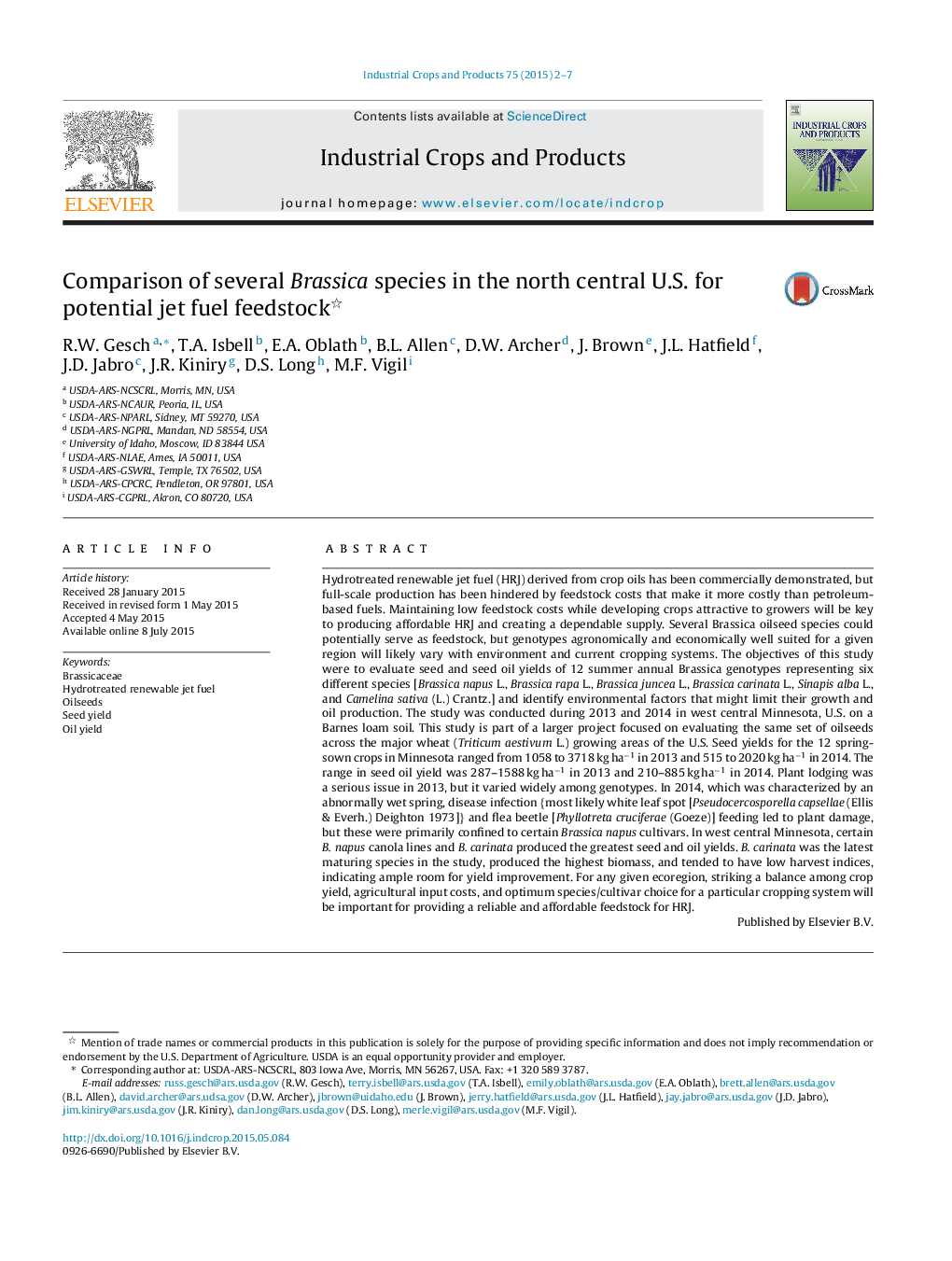| کد مقاله | کد نشریه | سال انتشار | مقاله انگلیسی | نسخه تمام متن |
|---|---|---|---|---|
| 4512818 | 1322172 | 2015 | 6 صفحه PDF | دانلود رایگان |
• Several Brassica oilseed crops were compared in Minnesota for jet fuel feedstock.
• Over two years, seed yields ranged from 515 to 3700 kg ha−1.
• Genotypes of Brassica carinata and B. napus were the highest yielding.
• Optimum oilseed genotype for jet fuel feedstock will vary with environment.
Hydrotreated renewable jet fuel (HRJ) derived from crop oils has been commercially demonstrated, but full-scale production has been hindered by feedstock costs that make it more costly than petroleum-based fuels. Maintaining low feedstock costs while developing crops attractive to growers will be key to producing affordable HRJ and creating a dependable supply. Several Brassica oilseed species could potentially serve as feedstock, but genotypes agronomically and economically well suited for a given region will likely vary with environment and current cropping systems. The objectives of this study were to evaluate seed and seed oil yields of 12 summer annual Brassica genotypes representing six different species [Brassica napus L., Brassica rapa L., Brassica juncea L., Brassica carinata L., Sinapis alba L., and Camelina sativa (L.) Crantz.] and identify environmental factors that might limit their growth and oil production. The study was conducted during 2013 and 2014 in west central Minnesota, U.S. on a Barnes loam soil. This study is part of a larger project focused on evaluating the same set of oilseeds across the major wheat (Triticum aestivum L.) growing areas of the U.S. Seed yields for the 12 spring-sown crops in Minnesota ranged from 1058 to 3718 kg ha−1 in 2013 and 515 to 2020 kg ha−1 in 2014. The range in seed oil yield was 287–1588 kg ha−1 in 2013 and 210–885 kg ha−1 in 2014. Plant lodging was a serious issue in 2013, but it varied widely among genotypes. In 2014, which was characterized by an abnormally wet spring, disease infection {most likely white leaf spot [Pseudocercosporella capsellae (Ellis & Everh.) Deighton 1973]} and flea beetle [Phyllotreta cruciferae (Goeze)] feeding led to plant damage, but these were primarily confined to certain Brassica napus cultivars. In west central Minnesota, certain B. napus canola lines and B. carinata produced the greatest seed and oil yields. B. carinata was the latest maturing species in the study, produced the highest biomass, and tended to have low harvest indices, indicating ample room for yield improvement. For any given ecoregion, striking a balance among crop yield, agricultural input costs, and optimum species/cultivar choice for a particular cropping system will be important for providing a reliable and affordable feedstock for HRJ.
Journal: Industrial Crops and Products - Volume 75, Part B, 30 November 2015, Pages 2–7
